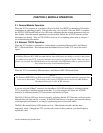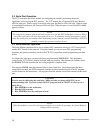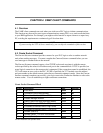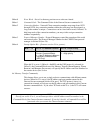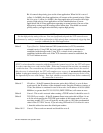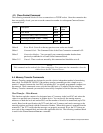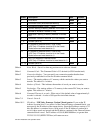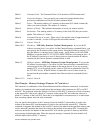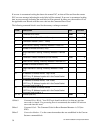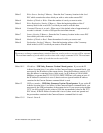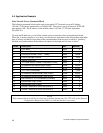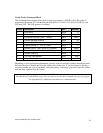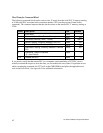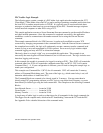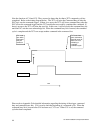CTI 2572 Installation and Operation Guide
37
Offset 1 Command Code - The Command Code is 514 decimal (or 0202 hexadecimal).
Offset 2 Connection Number - You can specify any connection number that has been
previously established in a C
REATE SOCKET command block.
Offset 3 Source - The starting address of V memory in the remote PLC which contains the
values you want to transfer. This address is 1 relative.
Offset 4 Number of Words - This indicates the number of words you want to transfer.
Offset 5 Destination - The starting address of V memory in the local PLC that you want to
update. This address is 1 relative.
Offset 6 Command Timeout in seconds - When set to 0, the default value of approximately 9
seconds is selected. A value of 999 specifies an infinite timeout.
Offset 7-9 Unused - Set to 0.
Offset 10-11 IP Address - UDP Only, firmware Version 5.0 and greater. If you set the IP
Address Location bit to 1 (see offset 4 of the C
REATE SOCKET command block), you
must specify the IP address of the remote device. Since the IP address consists of 32
bits, the address is contained in two 16 bit words. An IP Address of 0.0.0.0 (0000
0000 hex) or greater than 223.255.255.255 (DFFF FFFF hex) will return an error. If
the IP Address Location bit is set to 0, these words are ignored and the IP address
contained in the C
REATE SOCKET command block is used.
Offset 12 UDP port number - UDP Only, firmware Version 5.0 and greater. If you set the
IP Address Location bit to 1 (see offset 4 of the C
REATE SOCKET command block),
you must specify the UDP port number of the remote device. If you are accessing
another 2572, you will typically set this value to 1505 (the recommended value for
the 2572 PLC server). If the IP Address Location bit is set to 0, these words are
ignored and the port number contained in the C
REATE SOCKET command block is
used.
Offset 13-15 Unused - Set to 0.
Word Transfer - Memory Exchange (Firmware V4.7 and above)
This function is a combination of the WRITE REMOTE and READ REMOTE commands. As the name
implies, it is intended to be used in applications that exchange values between two PLCs or a PLC
and a PC. The command writes the contents of a block of local PLC V memory to a block of memory
in the remote PLC, then reads a block of V memory in the remote PLC and writes the values to a
block of V memory in the local PLC. Since this is accomplished in one transaction, it is much faster
than executing separate read and write commands.
You can specify the locations of the V memory blocks in both PLCs, the number of words to be
written to the remote PLC, and the number of words to be read from the remote PLC. When the
command is triggered, the module in the local PLC retrieves the data from the specified memory and
sends a message containing the data to be written to the module in the remote PLC. Assuming the
write was successful, the module in the remote PLC will read the specified V memory and build a
reply message containing the data. When the response message is returned, the local module will
write the data to the local PLC V memory.



